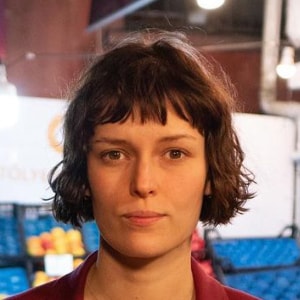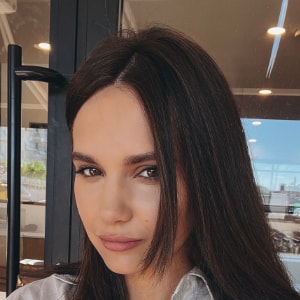How to prepare for a photo shoot: technical recommendations
To get natural yet aesthetically pleasing shots, we choose the location, prepare the lighting, and invite the characters beforehand. This guide is about how we prepare for the shoot and set up the frame in the process.
Location, background and details
- Get rid of visual noise. Before shooting, clear the checkout area, remove unnecessary marketing media or hangers with clothes. At the same time, hold on to the context; demonstrate where we are.
- Use the blur effect. This makes the frame clearer and more pleasing aesthetically. We follow the dynamics and natural behavior of the characters, so that the shot does not turn into a stock image.
- Be in control of the content within the frame. Move hangers, furniture, lamps, chairs and tables around.
- Review the shots in process. The shooting involves a person who makes sure the frame is clear while the shoot is in progress, keeping an eye on when to raise a lamp, clean off a table in the background, and move a bunch of scooters at the front.



People in the frame
Working with professional actors
This is the simplest but pricey option. We make sure the actors understand that authenticity is important to us; we ask them to imagine that they are sitting in a pizzeria with friends, and there is no photographer around. This helps to remove the theatricality and get natural shots.
Working with friends or clients
We examine the social networks of the people we are going to invite to the shoot. We see if the emotions they display are dynamic and diverse, the way the models smile and behave on camera. We invite the most charismatic characters.
Emotions
- Find inspiration in real people’s actions. We pay attention to how people in our pizzerias behave: singles, couples, companies, colleagues. We take their behavior and emotions as a basis, and induce some dynamic and friendliness on the set.
- Highlight emotions. In reality, people who come to dine alone, smile very little and check their phones often. To get a more expressive shot, ask the characters to show emotions.
- Maintain moderation. An overly emotional shot will look surreal and unnatural. To convey the right mood to the actors, use the phrase: "You are laid-back, but in a great mood. It's not the joy of having a baby, it's just another great day."
- Consider the context. If people celebrate a birthday in a pizzeria, show joy and bright emotions. With the help of details, we tell the viewer that it's a celebration: we use such props as birthday hats, candles, a cake, and gifts.



Postures and motions
- Give the characters freedom. We don't ask our actors to take a rigid posture, but mark the boundaries in the space within which they can move. This helps to keep things natural.
- Correct the details. We keep a balance between naturalness and aesthetics. If you can't find the right angle, guide the character. For example, when you need to take a shot of an application screen, and the model is holding the smartphone inaccurately. In this case, we can slightly rotate the hand or figure.


Light
- Take the weather conditions and space limitations into consideration. Light has a big impact on the mood of a shot, so we always think ahead of time about what light sources will be available in the room and what additional equipment we may need.
- We try to shoot under the natural light. We wait for the sun, if possible. We use artificial sources and reflectors to correct the details.



Angle and shooting style
Reportage
Capture the normal flow of events without trying to impact them. In reportage photography, the photographer doesn't always have full control over the background, lighting or composition. As a result, branded elements or products may not be seen enough.


Reportage-like shooting
Let's imagine a situation: a good street reporter comes to a pizzeria with perfect light; the guests don't notice him and behave as naturally as possible; the photographer captures the moments as an external observer. This is the effect we aim at during shooting.
How we achieve the desired effect:
- we use lenses with a long focal length;
- create several perspectives in the picture and include objects, which seem to “crawl” into the foreground, into the frame;
- shoot from a distance to create a "peek-a-boo" effect.




Cropping
Crop images to highlight the main object, to improve composition, to remove unnecessary elements or to zoom in the product.




Tools for shooting: smartphone or camera
Choose a tool based on the format and capabilities of the location. Make sure that the sharpness and quality of the tool are sufficient.
| Street in the daytime | The street at night | A pizzeria with good light | Pizzeria with bad light/kitchen. | |
|---|---|---|---|---|
| Peek-a-boo format | Smartphone or camera with telephoto lens | Camera with a long focal length light-sensitive lens | Smartphone or camera with telephoto lens | Just the camera and the light exposure |
| UGC Simulation | A smartphone is better | Camera or flagship smartphone | A smartphone is better | It's better not to take photos |
| Food photo | Anything | It's better not to take photos | Anything | Just the camera and the light exposure |
Read next:

